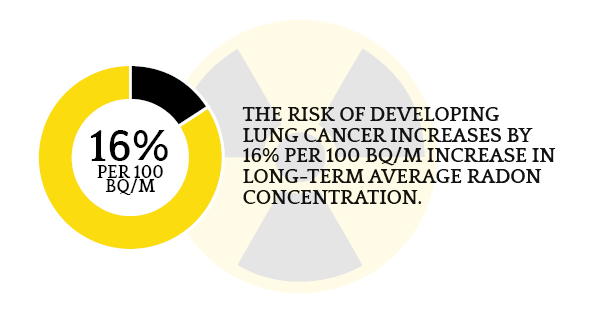
Radon is a silent and deadly gas, but unfortunately not many Americans know much about it. Even many residents of states like Colorado, a high-risk area for radon poisoning, don’t understand the dangers of this deadly gas.
It doesn’t have to be this way. For instance, after an aggressive public awareness campaign, it’s now public knowledge that lead is extremely toxic. To work towards a future where everyone understands the hazards of radon poisoning, here are some basic facts about radon gas and why it is crucial to stay as far away as possible.
- The word radon comes from radium, which is a fundamental chemical element (number 88 on the periodic table). Radon is also an element (number 86), one that naturally occurs as a gaseous decay product of radium. Radon was discovered back in 1900 and is a tasteless, odorless, and radioactive gas.
- Radon is the heaviest known gas, and is nine times heavier than air.
- Not only is radon the most common source of background radiation, it is also the second-leading cause of lung cancer in the United States. In fact, the risk of developing lung cancer increases by 16% per 100 Bq/m increase in long-term average radon concentration.
- Around 22,000 people die in the United States every year from radon exposure. For perspective, living in a radon filled home for 12 years is the equivalent of smoking 10 cigarettes per day.
- According to the Environmental Protection Agency, about one in 15 homes has elevated levels of radon gas right now, and a full two-thirds of homes exceed the “healthy” outdoor level of 0.4pCi/L.
- Radon gas is produced when atoms of radium decay. Because this element is often found in soils and rocks around a home’s foundation, radon gas naturally occurs in many residential areas. When the breakdown occurs, the gas will seep into the lower levels of the home, and since the homeowners cannot see, smell, or taste it, it stays there permanently.
- In the average basement exposed to radium, 38 million radon gas atoms will decay every single hour. Just imagine the amount of radon that would cause in a lifetime!
- Radon is removed via professional radon testing and inspection. A residential radon testing service will come in and test the home, and if high levels are present, they will recommend different types of radon mitigation. This can range from installing a sump pump to a vapor barrier wall and drain system.
Concerned that your home is at risk for radon and you’d like a residential radon testing service to come and check things out? Make sure to call professional radon inspectors to ensure your home is clean and safe!

Recent Comments